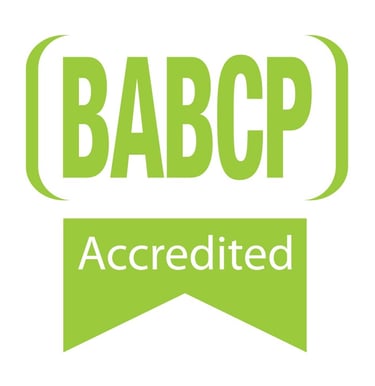Do I need Trauma Focused CBT or EMDR?
ANXIETY
Chris Taylor
6/7/20252 min read
Trauma Focused -CBT (TF-CBT) vs. Eye Movement Desensitisation and Reprocessing therapy (EMDR): Understanding Two Proven Approaches to Trauma Therapy
When recovering from trauma, choosing the right therapeutic approach can feel overwhelming. Among the most researched and effective treatments for trauma are TF-CBT and EMDR. Both therapies are evidence-based and widely used, but they differ in how they help individuals process traumatic experiences. This post will help you understand the core principles, differences, and potential benefits of each—so you can make an informed decision about your healing journey.
What Is TF-CBT?
Trauma-Focused Cognitive Behavioural Therapy is a structured, short-term treatment model designed specifically for people experiencing emotional symptoms associated with traumatic experiences, both recent or historical.
Key features of TF-CBT include:
Psychoeducation: Learning about trauma and its effects on the brain and emotions.
Cognitive restructuring: Identifying and challenging unhelpful thoughts or beliefs related to the trauma.
Skill building: Learning coping strategies like relaxation, emotion regulation, and problem-solving.
"Reliving" the traumatic experience: Safely revisiting traumatic memories in a structured way to reduce distress over time.
Updating the trauma memory: Working through the memory in a safe and effective way enables the traumatic memory to be updated with an associated reduction in emotional distress.
What Is EMDR?
Eye Movement Desensitization and Reprocessing is a unique psychotherapy approach that helps people heal from trauma by targeting the way traumatic memories are stored in the brain.
Key features of EMDR include:
Bilateral stimulation: Typically through guided eye movements, sounds, or tapping to stimulate both hemispheres of the brain.
Memory processing: Clients focus on traumatic memories while engaging in bilateral stimulation, which helps “unlock” and reprocess stuck memories.
Non-verbal focus: Unlike talk therapy, EMDR doesn’t require a detailed verbal recounting of the trauma.
Adaptive resolution: The goal is to transform the emotional intensity of the memory and allow for healthier beliefs to emerge.
EMDR is often chosen by individuals who prefer not to talk extensively about their trauma or have difficulty verbalizing their experience.
Which Is Right for You?
Both TF-CBT and EMDR are supported by extensive research and can be highly effective. The National Institute for Clinical Excellence (NICE) advises TF-CBT for trauma symptoms lasting longer than a month. NICE also a note that consideration should be made for those seeking a preference for EMDR. Other considerations:
Your comfort level with talking about trauma
The nature of your trauma (single-event vs. complex trauma)
Whether you prefer structured coping strategies (TF-CBT) or more experiential processing (EMDR)
It’s important to speak with an accredited therapist trained in both or either modality to explore what might be the best fit for your needs.
Final Thoughts
Seeking therapy can be an anxiety provoking but important step toward healing. Whether you choose TF-CBT or EMDR, both offer hope and real, lasting relief from the emotional weight of trauma. The most effective therapy is not just about the method—but also the connection and trust you build with your therapist.

